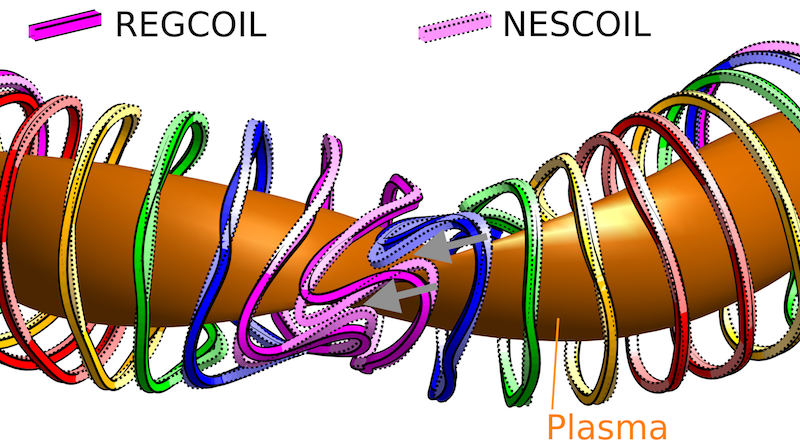Magnets
Designing the shapes of electromangetic coils and other magnets to realize stellarators
A central issue for stellarators is the calculation of the shapes of magnets to produce the confining magnetic field. Stellarators always include electromagnetic coils, and permanent magnets or diamagnetic blocks could be included as well. The design of stellarator magnet shapes has analogies in other subjects, such as the design of electromagnets for magnetic resonance imaging.
While the problem of computing the magnetic field B from known currents J is straightforward, the problem of computing the currents to produce a desired field is an ‘ill-posed inverse problem.’ Loosely speaking, this means that an infinite number of different current distributions can produce almost exactly the same field in the confinement region. The ill-posed nature of the stellarator coil design problem is actually an advantage, in that it means there is substantial freedom in the magnet design that can be exploited.
One area of our group’s research is improved ways to formulate the problem of stellarator magnet design. Improvements in this area can have significant impact on the feasibility of building a stellarator, since the coils are among the most expensive and difficult components to fabricate. An example of an improved formulation developed in our group is the REGCOIL method, described in this paper, and implemented in the code here. In REGCOIL, the inverse problem is regularized using a physical term – the inverse distance between coils. As a result, coil shapes computed by REGCOIL have larger spaces between the coils, improving the feasibility of designs and leaving more room for ports. Figure 1 shows the superiority of REGCOIL-derived coils compared to coils from the earlier algorithm used to design the coils of W7-X and HSX, NESCOIL.

Our group is pursuing several research questions related to magnet design. How can ferromagnets and/or diamagnets be incorporated into stellarator design? What makes certain magnetic field configurations easier or harder to produce using magnets far from the confinement region? To what tolerances must the coils be built, and how can we design stellarators to make these tolerances wider? How can stellarator design be formulated such that the resulting coil shapes are as simple to build as possible? How can we compute magnet shapes that provide significant experimental flexibility?